
| 水無月会 内村泉陽書道教室 藤井寺 羽曳野 八尾 書道教室/篆刻教室 お習字/書き方 内村天風篆刻教室 Calligraphy |

HOME Calligrahy Seal(English) Sceau(Francais)
| CALLIGRAPHY |
Why don't you try Japanese calligraphy not only for your Japanese mastery
but also for more proficiency of Japanese culture? The class is open at
your request or you can join our regular class (Tuesday, Wednesday, Sunday).
For more information, please send an email.
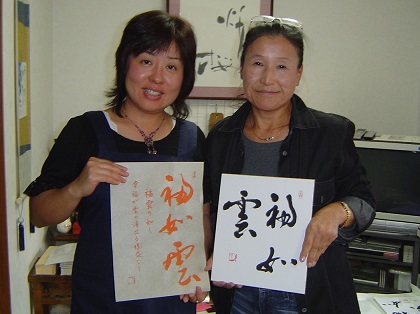 |
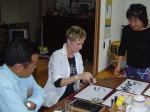 |
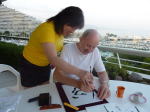 |
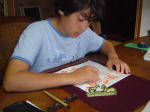 |
| from New Caledonia | from Australia | from France | from Italy |
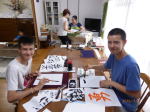 |
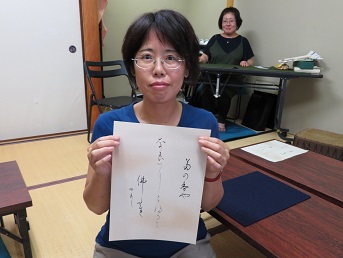 |
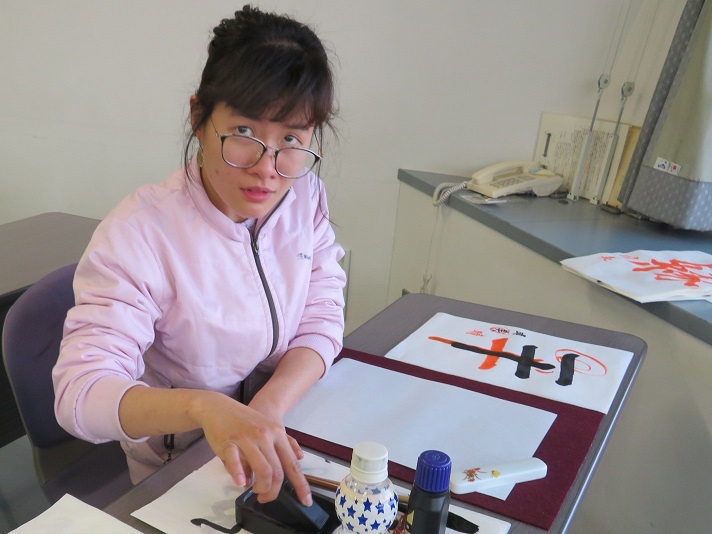 |
|
| from France | from Spain | from Italy | from Vietnam |
| PROFILE |
SENYOU UCHIMURA
Born in Osaka (1966). Graduated from Shitennouji IBU University(1989). Master of Japanese Calligraphy in Kanji (1996) and in Kana(1999). Having classes in Osaka. Showing works at least once a year.
| PASSED EXHIBITION |
2001 France, Switzerlnad
2008 Osaka
2011 Osaka
2012 Osaka
2013 Kyoto
2015 Tokyo
2016 Osaka
2016 Guam (USA)
2017 Tokyo
2018 Osaka
2019 Tokyo
2020 Osaka (YouTube)
2023 Kobe
2024 Osaka
| COMING EXHIBITION |
2025 Kobe
2025 Paris (France)
2026 Kamakura
| WORKS |
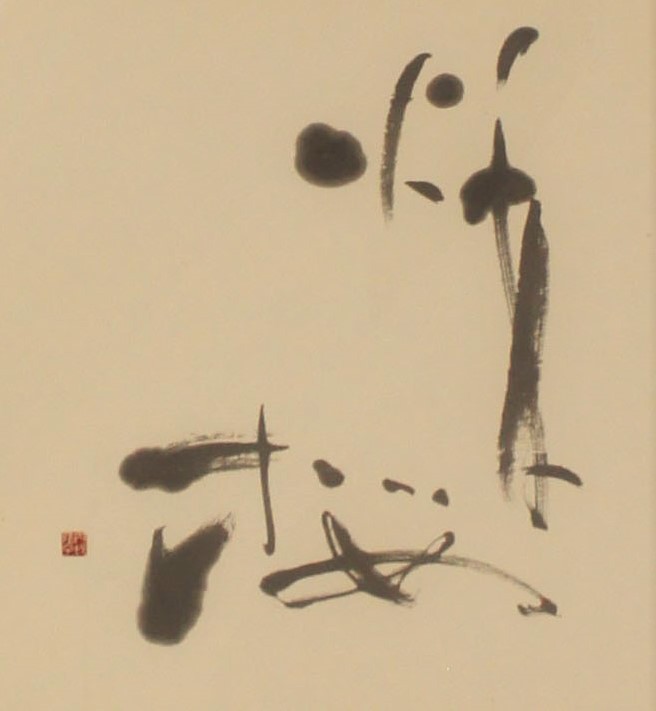
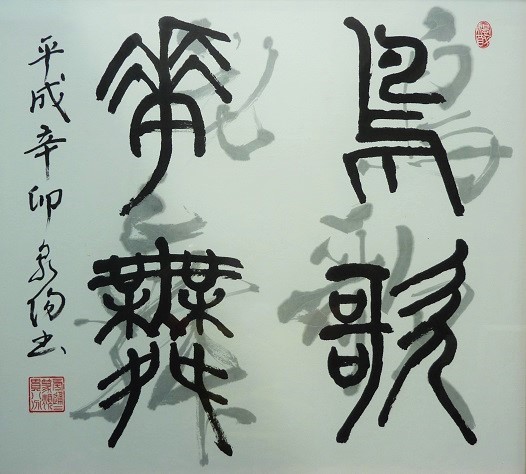

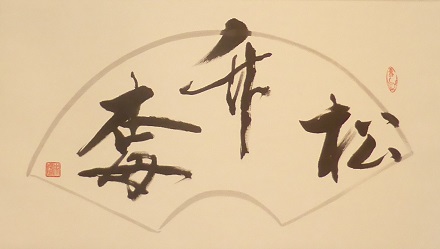
calligraphy collaborated with BONSAI
| ANNUAL EXHIBITION |
The Calligraphers' Exhibiton in Fujiidera is held in autumn every year. Please come and enjoy at The Purple Hall, 2F of the Fujiidera Public Hall (Shimin Sougou Kaikan) Tel: 072-939-1111 The admission is free.
| WHAT IS JAPANESE CALLIGRAPHY |
Japanese calligraphy, shodou, is a highly developed art form using brush and black ink to write Japanese and Chinese characters. While similar to the decorative calligraphy of the West, shodou is more deeply rooted as a fine art form, in part because every character has meaning in and of itself and in part because of the great diversity of character shapes. Shodou is increasingly admired by Japanese and foreigners alike.
The kakizome held on January 2 marks the first writing of the new year and is still regularly performed today. Facing an auspicious direction, Participants write out felicitous words and phrases. Kakizome competitions are annual elementary and junior high school events.
History
Shodou traces its origins to China, where the master calligrapher Wang
Xizhi is traditionally credited as the father of the art. It was introduced
into Japan in the 8th century. The early Heian contemporaries Kuukai, Emperor
Saga, and courtier Tachibana no Hayanari are respectfully referred to as
the Sanpitsu or Three Great Brushes, and their calligraphy is considered
representative of Chinese calligraphy's classic beauty.
In the 10th and 11th centuries these three were succeeded by the Sanseki
(the Three Traces): Ono no Toufuu, Fujiwara no Sukemasa, and Fujiwara no
Yukinari. These three masters developed the first uniquely Japanese calligraphy
style, known as wayou (also joudaiyou). Fujiwara no Yukinari's style led
to the formation of the Sesonji school and Ono no Toufuu served as a model
for the Shouren'in school which later evolved into the Oie style of calligraphy.
The Oie style was used for official documents in the Edo period and was
the predominant style taught in the terakoya schoools of that period.
Just as calligraphy has changed over the ages, the revived interest in
calligraphy today is characterized by its broad latitude for creativity
and the increasing number of women masters.
Calligraphy Styles
There are three basic styles: kaisho, gyousho, and sousho. Kana might be added as a fourth style. Kaisho, a block style with little movement, is also called shinsho. Gyousho is an intermediate style neither as stiff as kaisho nor as flowing as sousho. Sousho is a highly cursive style written with swift strokes. Its freedom and aesthetic appeal has made sousho very popular with calligraphy masters.
Kana originated in the more extreme forms of sousho. Because it was the primary script for Heian women, kana was at one time referred to as Onnade (women's writing). Kana developed with the growing popularity of waka poetry. Compared to the boldness of Chinese characters, kana is elegant and refined. Japanese calligraphy is judged not only by its surface beausty and meaning but also by the calligrapher's character.
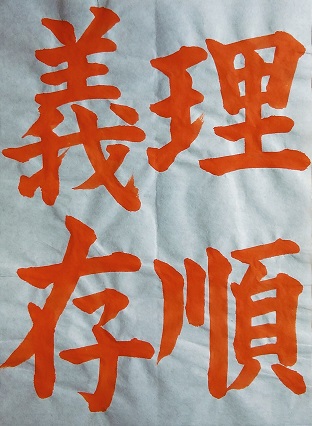 |
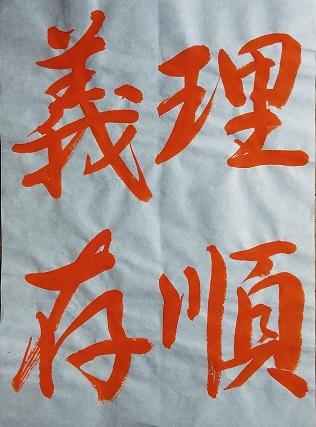 |
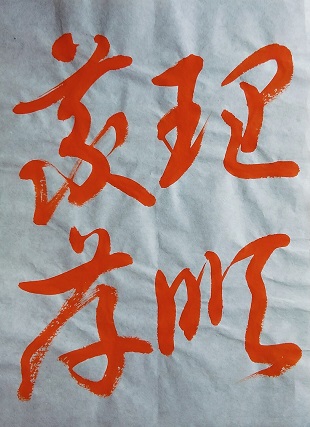 |
 |
| kaisho | gyousho | sousho | kana |
(partially quoted from JAPAN AS IT IS)
| CONTACT |
| 日本の書道文化がユネスコ無形文化遺産に向けて始動しました。書道のお稽古は人生を豊かにするための生涯学習の一つです。幼児・学生から定年退職を迎えられた方、子育てが一段落された方、また人生をもっと楽しみたい方等々、生涯学習として書道を始めてみませんか。 |
| 水無月会 内村泉陽書道教室 藤井寺 羽曳野 八尾 書道教室/篆刻教室 お習字/書き方 内村天風篆刻教室 Calligraphy |